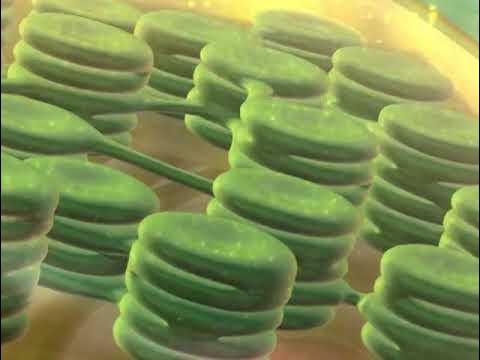Difference Between Plant Cell And Animal Cell
Summary
TLDRThis video compares plant and animal cells, highlighting their key differences and similarities. Plant cells are characterized by a rigid cell wall, a large central vacuole, and plastids, which are important for photosynthesis and giving color. In contrast, animal cells have a flexible cell membrane, smaller vacuoles, and lack plastids. Despite these differences, both cell types share similar organelles like the nucleus and mitochondria, performing essential functions. The video offers a simple and engaging explanation of the structure and function of both types of cells.
Takeaways
- 😀 Plant cells have a rigid cell wall, while animal cells have a flexible cell membrane.
- 😀 Plant cells possess a large central vacuole, which is either absent or very small in animal cells.
- 😀 Plastids, important for photosynthesis and providing color, are found only in plant cells.
- 😀 The structure of plant and animal cells differ, but both share many organelles with similar functions.
- 😀 Photosynthesis is a vital process in plant cells, made possible by plastids.
- 😀 Animal cells do not contain plastids, unlike plant cells.
- 😀 The central vacuole in plant cells plays a key role in maintaining cell rigidity and storing substances.
- 😀 Plant cells and animal cells both have a cell membrane, but plant cells also have an additional cell wall.
- 😀 The main differences between plant and animal cells are the presence of the cell wall, central vacuole, and plastids in plant cells.
- 😀 While the organelles in both cell types are similar, their functions may vary slightly due to structural differences.
- 😀 Understanding the structural differences between plant and animal cells helps in grasping their respective functions.
Q & A
What is the first major difference between a plant cell and an animal cell?
-The first major difference is the rigid cell wall present in plant cells, while animal cells have only a cell membrane.
Do both plant and animal cells have a cell membrane?
-Yes, both plant and animal cells have a cell membrane, but plant cells also have a rigid cell wall in addition to the membrane.
What is the role of the central vacuole in plant cells?
-The central vacuole in plant cells plays a significant role in storing water, nutrients, and waste products, and helps maintain the cell's shape.
Is the central vacuole present in animal cells?
-No, animal cells either lack a central vacuole or have a very small one compared to plant cells.
What are plastids and why are they important in plant cells?
-Plastids are organelles found only in plant cells. They are crucial for processes like photosynthesis and contribute to the color of the plant.
Do animal cells have plastids?
-No, animal cells do not have plastids.
What is the main function of plastids in plant cells?
-The main function of plastids is to support photosynthesis, the process through which plants produce their food.
How do the organelles in plant and animal cells compare overall?
-Other than the differences mentioned, most organelles in plant and animal cells are similar in function, such as the nucleus, mitochondria, and ribosomes.
Why is the comparison between plant and animal cells important?
-Understanding the differences and similarities between plant and animal cells helps in learning how each cell type functions and contributes to the organism’s overall processes.
What is the significance of a rigid cell wall in plant cells?
-The rigid cell wall in plant cells provides structural support, protection, and helps maintain the cell’s shape.
Outlines

This section is available to paid users only. Please upgrade to access this part.
Upgrade NowMindmap

This section is available to paid users only. Please upgrade to access this part.
Upgrade NowKeywords

This section is available to paid users only. Please upgrade to access this part.
Upgrade NowHighlights

This section is available to paid users only. Please upgrade to access this part.
Upgrade NowTranscripts

This section is available to paid users only. Please upgrade to access this part.
Upgrade NowBrowse More Related Video

SEL PART 1 / KOMPONEN KIMIAWI, STRUKTUR, FUNGSI SEL / BIOLOGI KELAS 11 / SITOLOGI / CELL STRUCTURE

Plant and Animal cell

BioFlix 3D Animations for Mastering Biology

Comparing animal and plant cells | Cells and organisms | Middle school biology | Khan Academy

Eukaryotic Cells Part 2: Plant Cells

WHAT IS THE DIFFERENCE BETWEEN PLANT AND ANIMAL CELL
5.0 / 5 (0 votes)